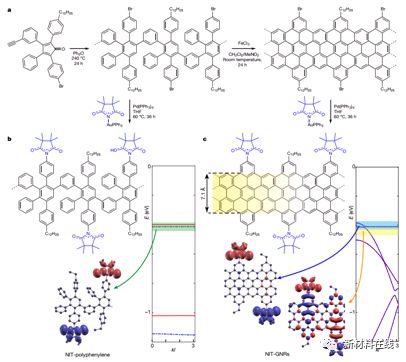
2. Significant Dzyaloshinskii-Moriya interaction caused by the Rashba effect at the graphene-ferromagnetic interface (Significant Dzyaloshinskii–Moriya interaction at graphene–ferromagnet interfaces due to the Rashba effect) Material name: Graphene/ferromagnetic metal research team: France The Chryev Group of the Grenoble-Alps University has been able to take advantage of the spin-rich nature of graphene, which has attracted much attention in the pursuit of advances in spintronics. The prospect of high-speed and low-energy devices has spurred researchers to look for stable chiral rotating texture layers (such as topologically protected Scots). Yang et al. demonstrated that the chiral spin texture is induced at the graphene/ferromagnetic metal interface. Graphene is a weak spin-orbital coupling material that does not usually cause enough Dzyaloshinskii-Moriya interaction to affect magnetic chirality. Yang et al. demonstrated that graphene does induce a class of Dzyaloshinskii-Moriya interactions due to the Rashba effect. Spin-polarized electron microscopy experiments and first-principles calculations show that this graphene-induced Dzyaloshinskii-Moriya interaction can be of the order of magnitude similar to that of heavy metals. This research paves the way for spin orbital science based on two-dimensional materials. (Nature Materials DOI: 10.1038/s41563-018-0079-4)
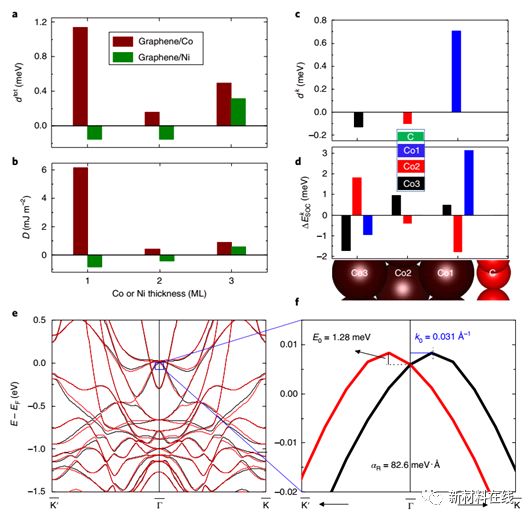 3. Spin Colossal magnetoresistance in an antiferromagnetic insulator Material name: Antiferromagnetic insulator Cr2O3 Research team: Dazhi Hou Research Group, Northeastern University, Japan Giant magnetoresistance (CMR) refers to The large changes in electrical conductivity caused by the magnetic field near the metal-insulator transition have spurred extensive research for decades. Qiu et al. demonstrated a similar spin effect near the Néel temperature (TN = 296K) of the antiferromagnetic insulator Cr2O3. By using the three-layer structure of yttrium iron garnet YIG/Cr2O3/Pt, Qiu et al. injected a spin current from YIG into the Cr2O3 layer and collected the spin transferred to the heavy metal Pt by the reverse spin Hall effect. signal. It is also observed that there are two orders of magnitude difference in the spin current transmitted by the Néel temperature within 14K. This transition between the spin-conducting and non-conducting states is also modulated by the magnetic field under isothermal conditions. This effect, which Qiu et al. called spin giant magnetoresistance (SCMR), has the potential to simplify the design of basic spintronic devices, such as implementing spin current switches or spin current based memories. (Nature Materials DOI: 10.1038/s41563-018-0087-4)
3. Spin Colossal magnetoresistance in an antiferromagnetic insulator Material name: Antiferromagnetic insulator Cr2O3 Research team: Dazhi Hou Research Group, Northeastern University, Japan Giant magnetoresistance (CMR) refers to The large changes in electrical conductivity caused by the magnetic field near the metal-insulator transition have spurred extensive research for decades. Qiu et al. demonstrated a similar spin effect near the Néel temperature (TN = 296K) of the antiferromagnetic insulator Cr2O3. By using the three-layer structure of yttrium iron garnet YIG/Cr2O3/Pt, Qiu et al. injected a spin current from YIG into the Cr2O3 layer and collected the spin transferred to the heavy metal Pt by the reverse spin Hall effect. signal. It is also observed that there are two orders of magnitude difference in the spin current transmitted by the Néel temperature within 14K. This transition between the spin-conducting and non-conducting states is also modulated by the magnetic field under isothermal conditions. This effect, which Qiu et al. called spin giant magnetoresistance (SCMR), has the potential to simplify the design of basic spintronic devices, such as implementing spin current switches or spin current based memories. (Nature Materials DOI: 10.1038/s41563-018-0087-4) 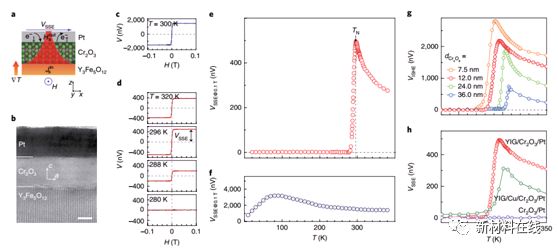 4. A radical approach to the copper oxidative addition problem: Trifluoromethylation of bromoarenes. Material name: aryl bromide research team: Princeton University MacMillan study Transition metal catalyzed aromatic functionalization has been widely used in molecular synthesis for the past century. Among them, copper catalysis has long been considered a special platform because high-priced copper tends to be reduced by various coupling fragments. However, the slow nature of oxidative addition limits the ability of copper to broadly promote the coupling of halogenated aromatics. Le et al. have shown that this copper oxidation addition problem can be overcome by an aryl capture mechanism in which an aryl group is formed by a silyl halogen substitution. This strategy can be applied to the trifluoromethylation of aryl bromides catalyzed by double copper-photooxidation. Mechanism studies support the formation of open-shell aryl species. (Science DOI: 10.1126/science.aat4133)
4. A radical approach to the copper oxidative addition problem: Trifluoromethylation of bromoarenes. Material name: aryl bromide research team: Princeton University MacMillan study Transition metal catalyzed aromatic functionalization has been widely used in molecular synthesis for the past century. Among them, copper catalysis has long been considered a special platform because high-priced copper tends to be reduced by various coupling fragments. However, the slow nature of oxidative addition limits the ability of copper to broadly promote the coupling of halogenated aromatics. Le et al. have shown that this copper oxidation addition problem can be overcome by an aryl capture mechanism in which an aryl group is formed by a silyl halogen substitution. This strategy can be applied to the trifluoromethylation of aryl bromides catalyzed by double copper-photooxidation. Mechanism studies support the formation of open-shell aryl species. (Science DOI: 10.1126/science.aat4133) 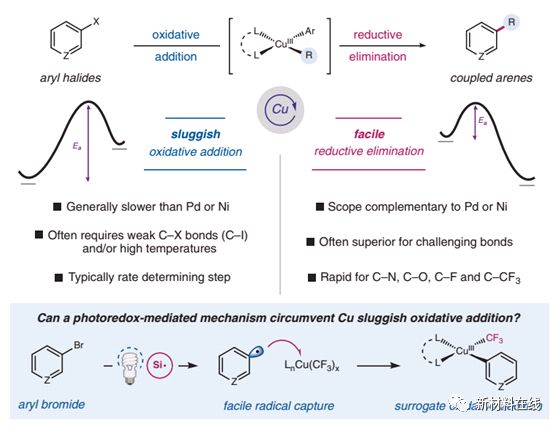 5. Aggregation and collapse dynamics of skyrmions in a non-equilibrium state Material name: Hexagonal lattice Gezizi crystal research team: Xiuzhen Yu Research Group, University of Tokyo, Japan Magnetic Sigphida has attracted people's attention because of its electromagnetic properties. In particular, the non-equilibrium Scots, which is topologically protected and therefore may exist in a wider temperature-magnetic field region, shows possible practical applications, but its dynamics are still elusive. Yu et al. reported the magnetic field-induced dynamic transition of the metastable hexagonal lattice lattice (SkX) to the amorphous state under zero-bias field observed by SkX filled with dense vacancies. On the other hand, as the field decreases, the aggregate changes from "random particle" to sigmoid "microcrystal" in a non-equilibrium state, similar to colloidal crystal, followed by SkX and a spiral with topological defects. /The cone domains experience a different phase separation between the topologies. These observations directly demonstrate the aggregation and collapse dynamics of metastable sigma, and may provide a way for other non-trivial topological phenomena, such as zero-magnetic topological Hall effect. (Nature Physics DOI: 10.1038/s41567-018-0155-3)
5. Aggregation and collapse dynamics of skyrmions in a non-equilibrium state Material name: Hexagonal lattice Gezizi crystal research team: Xiuzhen Yu Research Group, University of Tokyo, Japan Magnetic Sigphida has attracted people's attention because of its electromagnetic properties. In particular, the non-equilibrium Scots, which is topologically protected and therefore may exist in a wider temperature-magnetic field region, shows possible practical applications, but its dynamics are still elusive. Yu et al. reported the magnetic field-induced dynamic transition of the metastable hexagonal lattice lattice (SkX) to the amorphous state under zero-bias field observed by SkX filled with dense vacancies. On the other hand, as the field decreases, the aggregate changes from "random particle" to sigmoid "microcrystal" in a non-equilibrium state, similar to colloidal crystal, followed by SkX and a spiral with topological defects. /The cone domains experience a different phase separation between the topologies. These observations directly demonstrate the aggregation and collapse dynamics of metastable sigma, and may provide a way for other non-trivial topological phenomena, such as zero-magnetic topological Hall effect. (Nature Physics DOI: 10.1038/s41567-018-0155-3) 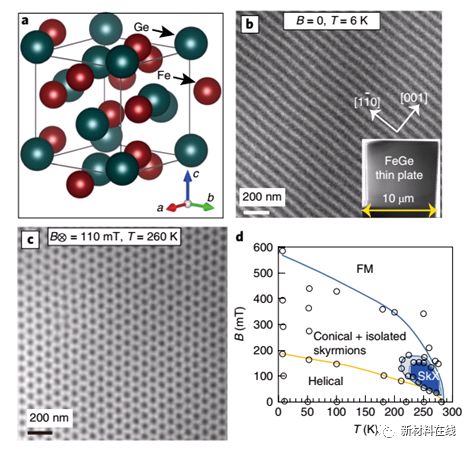 6. [Fe4S4] Clusters converts CO2 to hydrocarbons by biogenic and synthetic [Fe4S4] clusters. Material Name: [Fe4S4] Cluster Research Team: Yilin Hu Research Group, University of California, Irvine The Fe protein of nitrogenase contains a redox activity [Fe4S4] cluster, which plays a key role in electron transfer and substrate reduction. Stiebritz et al. showed that the Fe protein of M. mazei can reduce CO2 and CO to hydrocarbons under ambient conditions. Furthermore, it was also demonstrated that this reactivity is inherent to the [Fe4S4] cluster, indicating the ability of the synthetic [Fe4S4] compound to catalyze the same environmental reaction in solution. Theoretical calculations suggest a reaction mechanism involving an aldehyde intermediate that is capable of producing a hydrocarbon product upon proton-coupled electron transfer and concomitant removal of water molecules. These results provide a framework for FeS-based mechanisms for the activation and reduction of CO2 and CO, while promoting the potential development of FeS catalysts that convert CO2 and CO to fuel products. (Nature Catalysis DOI: 10.1038/s41929-018-0079-4)
6. [Fe4S4] Clusters converts CO2 to hydrocarbons by biogenic and synthetic [Fe4S4] clusters. Material Name: [Fe4S4] Cluster Research Team: Yilin Hu Research Group, University of California, Irvine The Fe protein of nitrogenase contains a redox activity [Fe4S4] cluster, which plays a key role in electron transfer and substrate reduction. Stiebritz et al. showed that the Fe protein of M. mazei can reduce CO2 and CO to hydrocarbons under ambient conditions. Furthermore, it was also demonstrated that this reactivity is inherent to the [Fe4S4] cluster, indicating the ability of the synthetic [Fe4S4] compound to catalyze the same environmental reaction in solution. Theoretical calculations suggest a reaction mechanism involving an aldehyde intermediate that is capable of producing a hydrocarbon product upon proton-coupled electron transfer and concomitant removal of water molecules. These results provide a framework for FeS-based mechanisms for the activation and reduction of CO2 and CO, while promoting the potential development of FeS catalysts that convert CO2 and CO to fuel products. (Nature Catalysis DOI: 10.1038/s41929-018-0079-4)  7. Holstein polaron in a valley-degenerate two-dimensional semiconductor material name: surface-doped layered semiconductor MoS2 research team: Keun Su Kim research group, Yonsei University, Korea Dimensional (2D) crystals have become a class of materials with adjustable carrier densities. Carrier doping into two-dimensional semiconductors can be used to modulate multibody interactions and to explore new composite particles. The Holstein polaron is an electron small composite particle that carries a spontaneously induced lattice deformation (or phonon) cloud, which is believed to play a key role in high temperature superconductivity and carrier mobility in devices. Kang et al. reported the discovery of Holstein polarons in surface-doped layered semiconductor MoS2, and a confusing 2D superconducting dome with a critical temperature of 12K was recently discovered in MoS2. Kang et al. also used high-resolution band mapping of charge carriers to find that strong band renormalization is considered to be a spectral function that has not been observed so far by Holstein polarons. The short-range nature of electron-phonon (e-ph) coupling in MoS2 can be explained by its valley degeneracy, which makes acoustic phonon-mediated strong channel-to-channel coupling possible. The coupling strength increases gradually along the superconducting surface to the intermediate region, indicating the presence of a pair of dual polarons in the two-dimensional superconductor. (Nature Materials DOI: 10.1038/s41563-018-0092-7)
7. Holstein polaron in a valley-degenerate two-dimensional semiconductor material name: surface-doped layered semiconductor MoS2 research team: Keun Su Kim research group, Yonsei University, Korea Dimensional (2D) crystals have become a class of materials with adjustable carrier densities. Carrier doping into two-dimensional semiconductors can be used to modulate multibody interactions and to explore new composite particles. The Holstein polaron is an electron small composite particle that carries a spontaneously induced lattice deformation (or phonon) cloud, which is believed to play a key role in high temperature superconductivity and carrier mobility in devices. Kang et al. reported the discovery of Holstein polarons in surface-doped layered semiconductor MoS2, and a confusing 2D superconducting dome with a critical temperature of 12K was recently discovered in MoS2. Kang et al. also used high-resolution band mapping of charge carriers to find that strong band renormalization is considered to be a spectral function that has not been observed so far by Holstein polarons. The short-range nature of electron-phonon (e-ph) coupling in MoS2 can be explained by its valley degeneracy, which makes acoustic phonon-mediated strong channel-to-channel coupling possible. The coupling strength increases gradually along the superconducting surface to the intermediate region, indicating the presence of a pair of dual polarons in the two-dimensional superconductor. (Nature Materials DOI: 10.1038/s41563-018-0092-7) 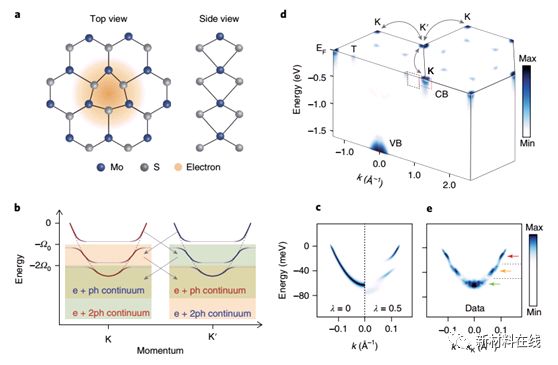
Pyrite as Fillers Used in Grinding Wheels/ Abrasive Tools
Ablation grinding wheel / abrasive( filling agent )
PYRITE__As fillers used in grinding wheels/ abrasive tools
Place of Origin: Henan Luoyang, China
Pyrite, Iron pyrites, pyrites lump, Ferro sulphur, Pyrites powder.
Product Description
Detailed introduction: is filling agent for ablating grinding wheel abrasive, which can effectively reduce the grinding wheel temperature during ablation, improve the heat resistance, and prolong the service life of the grinding wheel.
Formation of a protective layer
(1)The reaction absorbing oxygen occurs between 400 and 475 degrees, thereby reducing the oxidation of resin, reducing the oxidation burn of workpieces, and prolonging the working life of grinding wheels at high temperature.
4 FeS2 + 11 O2→2 Fe2O3 + 8 SO2
(2) 4 FeS + 7 O2→4 Fe2O3 + 4 SO2
400-475 degrees is a limit that the grinding wheel can easily reach. The above reaction creates an oxygen-free and hypoxic environment for the grinding wheel at the micro level, thereby improving the high-temperature performance of the grinding wheel.
Decomposition reaction occurs at 650-degree heat absorption, thereby reducing the working temperature of the grinding wheels.
FeS2→FeS + S
(3) It enters the melting state at about 1100 degrees, which becomes a good lubricant to protect the grinding wheel FeS(s)→FeS(l).
(4)Sulfur, sulfur dioxide and sulfur trioxide react with the workpiece surface to form FexSy:
Quality:
S: 48%min, FE: 42%min, SIO2: 3.0%max, PB: 0.1%max,
ZN: 0.1%max, AS: 0.1%max, . C: 0.3%max, CU: 0.2%max,
H20: 1.0%max, SIZE: 95%min
Granularity: (0-3)mm/(3-8)mm/(3-15)mm/(15-50)mm or other particle size.
Packing: 25KG/500KG/1000KG/BAG or 1000KG/BAG or other packaging.
Note: if there are special requirements, the product can be customized according to clients` requirements.
Iron Sulphide For Resin Grinding Wheel---LHT(SL)
Iron sulphide for resin grinding wheel Pyrite, Iron pyrites, pyrites lump, Ferro sulphur, Pyrites powder
LUOYANG PERFECT TRADING CO.LTD, , https://www.pyritefes.com